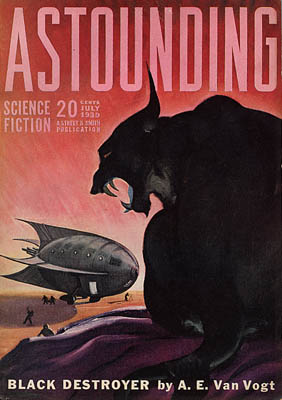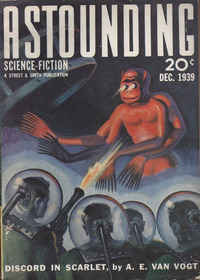Shagrat the Barbarian?
When Tolkien created the Orcs, he unleashed upon the world a blighted race that embodied the worst aspects of ourselves; a race whose name became synonymous with cruelty and hate, with savage violence and genocidal fury. Slaves, they were. Foul servants of fallen gods and dark lords and wizards who had strayed from the light. But, an odd thing occurred: Orcs evolved beyond the scope of their creator. They grew and multiplied. Their origins and aspects changed; they infested dungeons beyond number, became the military backbone of ambitious princelings and sorcerers-who-would-be-kings, and even found their way into the Chaos-wracked depths of space. But always they remained lackeys. Single-minded minions. Sword-fodder beneath our contempt. And yet . . .
And yet, not long ago Wizards of the Coast sparked a furor when they announced that half-orcs would no longer be a core character race in the 4th edition of Dungeons and Dragons. Fans wanted them to stay; some even declared that no game could bear the D&D banner and not have half-orcs. Indeed, the past few years have seen a sort of Orcish renaissance burst upon the fiction scene: a US omnibus edition of Stan Nicholls’ Orcs, Morgan Howell’s Queen of the Orcs trilogy, RA Salvatore’s The Orc King. But, rather than the villainous beasts typified by Tolkien, these modern Orcs have been engineered into perfect exemplars of the Noble Savage. …


 Clint Eastwood never starred in or directed a sword-and-sorcery or heroic fantasy movie, and since he’s declared his retirement from acting with 2008’s Gran Torino, chances are he never will. That’s too bad, since the leathery, iconic actor might have made a nice fit into certain dark fantasy worlds. Michael Moorcock thought he would have made an excellent Eric John Stark; I agree. But Eastwood as a performer and director was more interested the realistic American landscape, and he never got near the world of the overtly fantastic.
Clint Eastwood never starred in or directed a sword-and-sorcery or heroic fantasy movie, and since he’s declared his retirement from acting with 2008’s Gran Torino, chances are he never will. That’s too bad, since the leathery, iconic actor might have made a nice fit into certain dark fantasy worlds. Michael Moorcock thought he would have made an excellent Eric John Stark; I agree. But Eastwood as a performer and director was more interested the realistic American landscape, and he never got near the world of the overtly fantastic. Naughty or nice? Well, the holidays being my favorite excuse to procrastinate, I’ll have to reluctantly admit to ‘naughty.’ Being naughty, I’ve left my blog entry to the last minute. I’ve had a few New Yearsie ideas I thought I might advance, the kinds of things having to do with resolutions — mostly of the writing variety. But writing has been well enough covered at Black Gate of late and, while I know we have a lot of writers in our audience, I can’t help but think the thing that really pulls us all together, and sets us apart from, well, from a great many people who would never pick up a work of fiction let alone investigate the website of a fantasy magazine, is that we are all readers. First and foremost, that defines us.
Naughty or nice? Well, the holidays being my favorite excuse to procrastinate, I’ll have to reluctantly admit to ‘naughty.’ Being naughty, I’ve left my blog entry to the last minute. I’ve had a few New Yearsie ideas I thought I might advance, the kinds of things having to do with resolutions — mostly of the writing variety. But writing has been well enough covered at Black Gate of late and, while I know we have a lot of writers in our audience, I can’t help but think the thing that really pulls us all together, and sets us apart from, well, from a great many people who would never pick up a work of fiction let alone investigate the website of a fantasy magazine, is that we are all readers. First and foremost, that defines us.